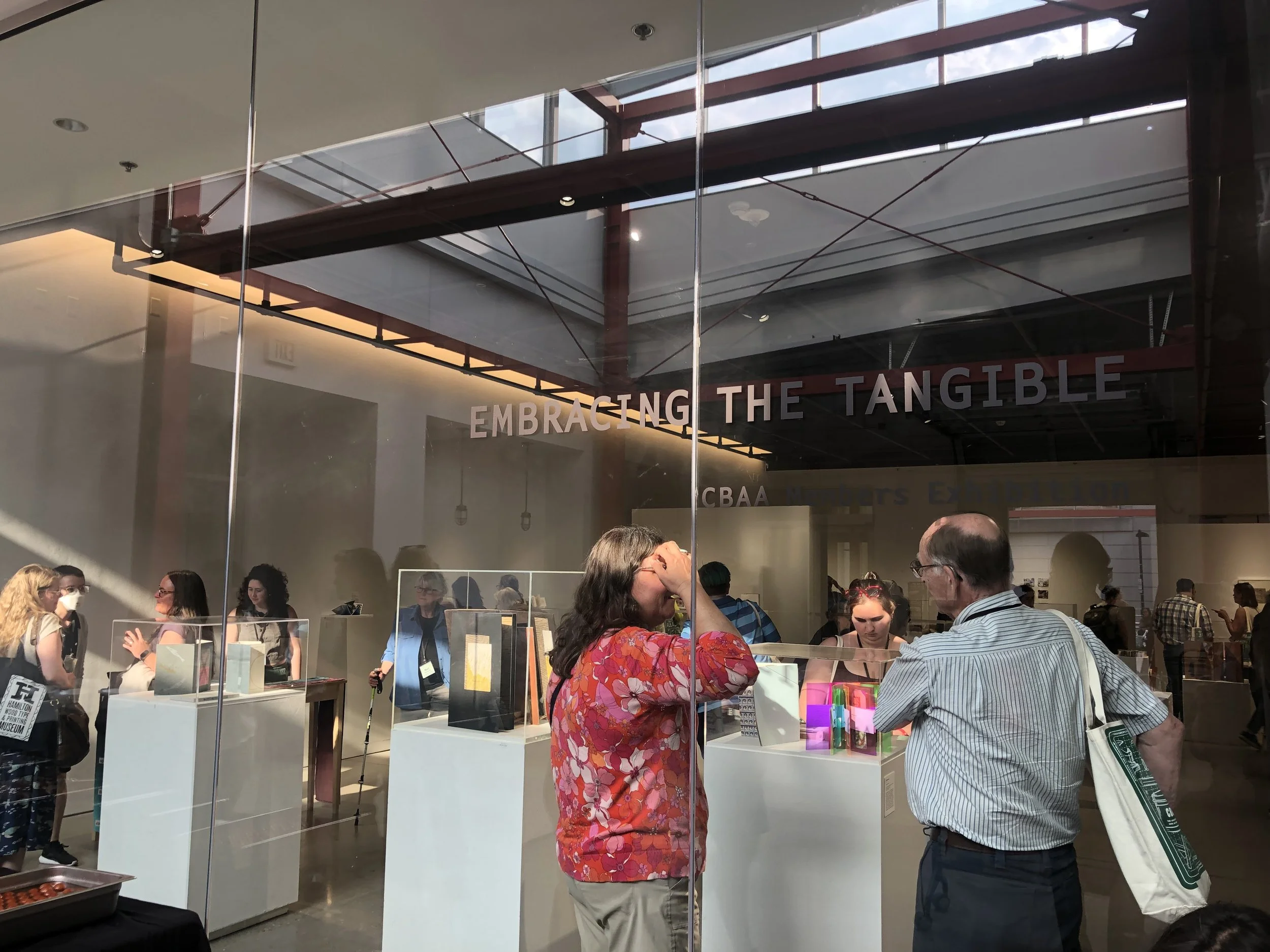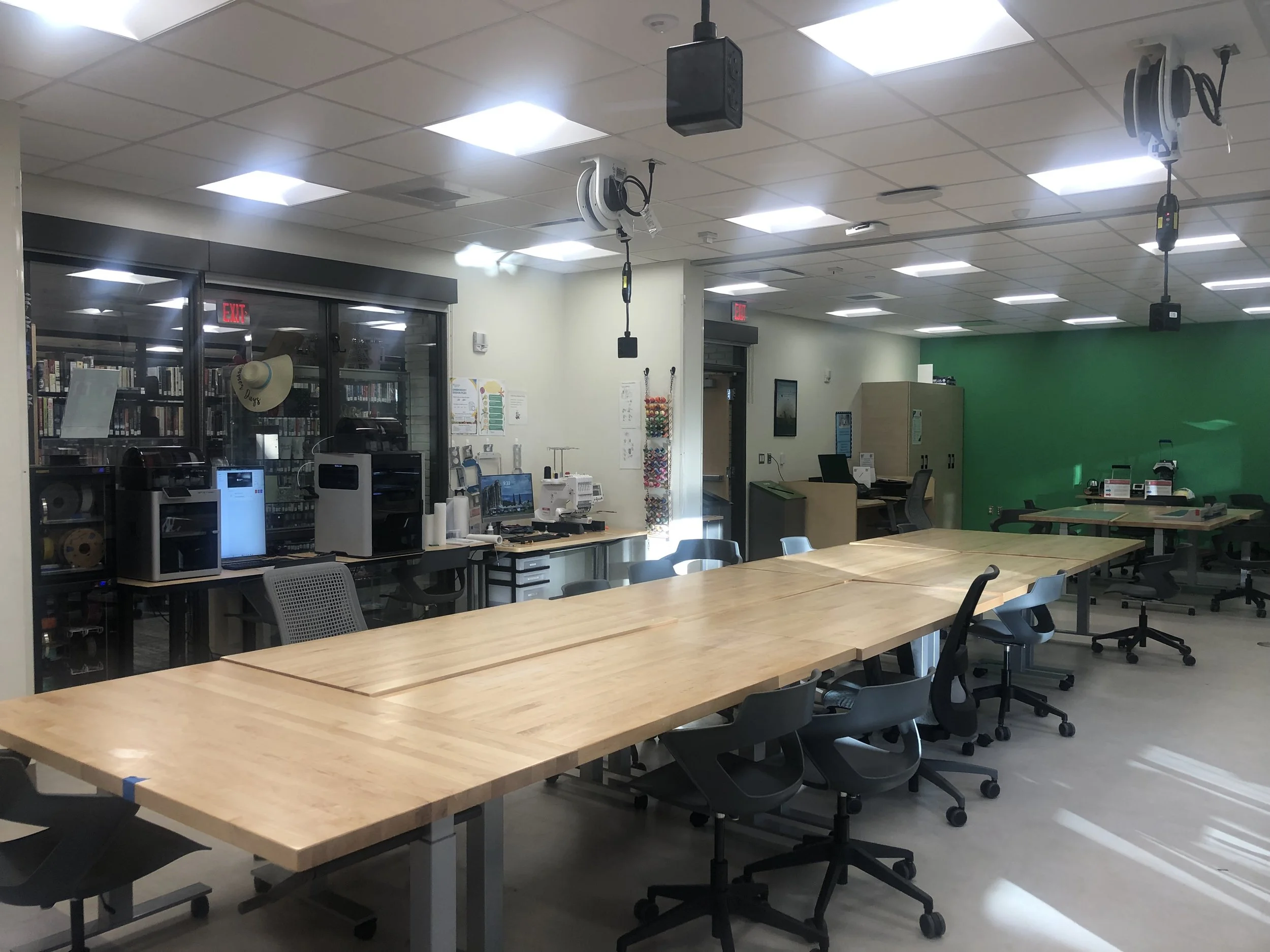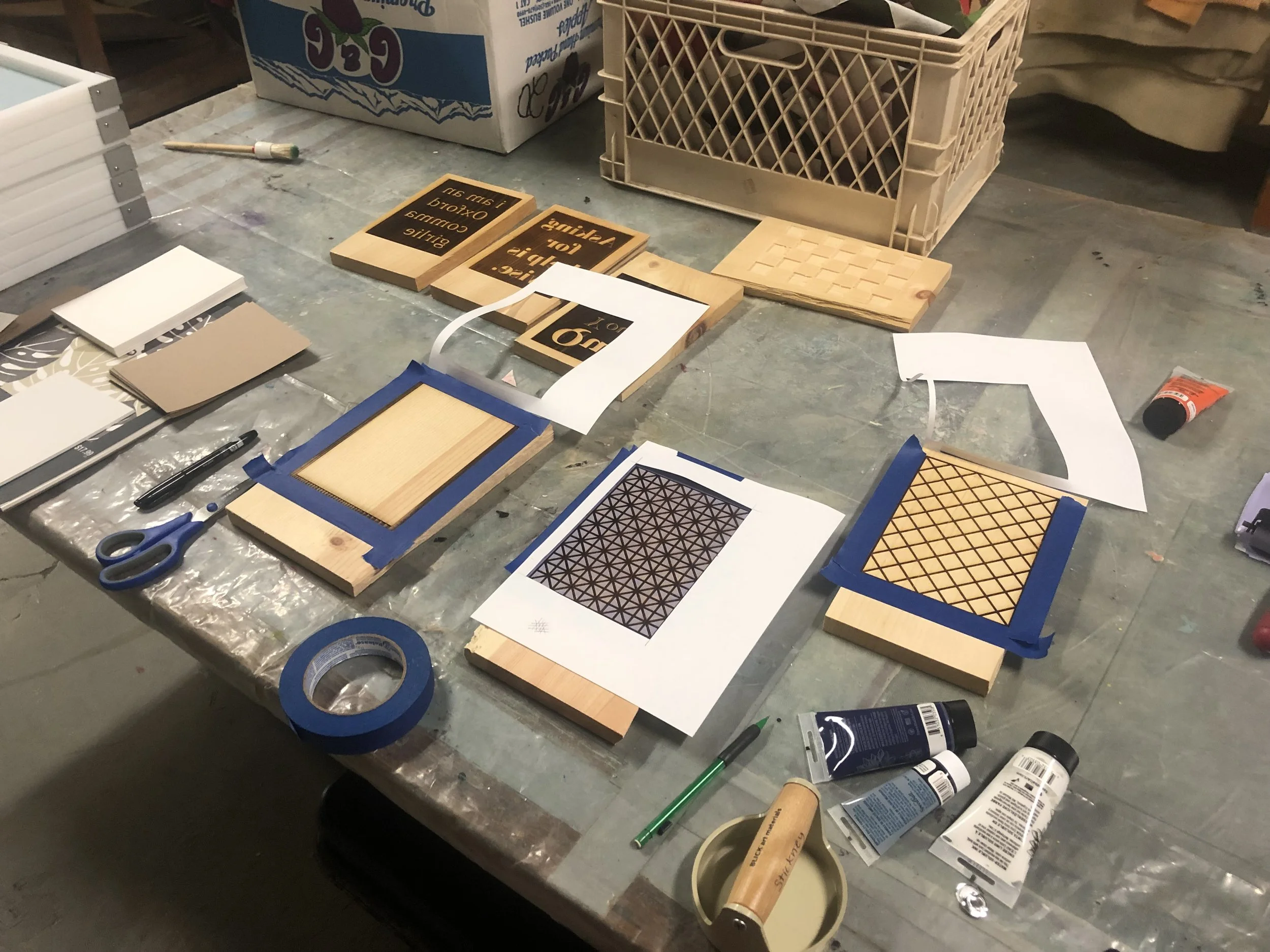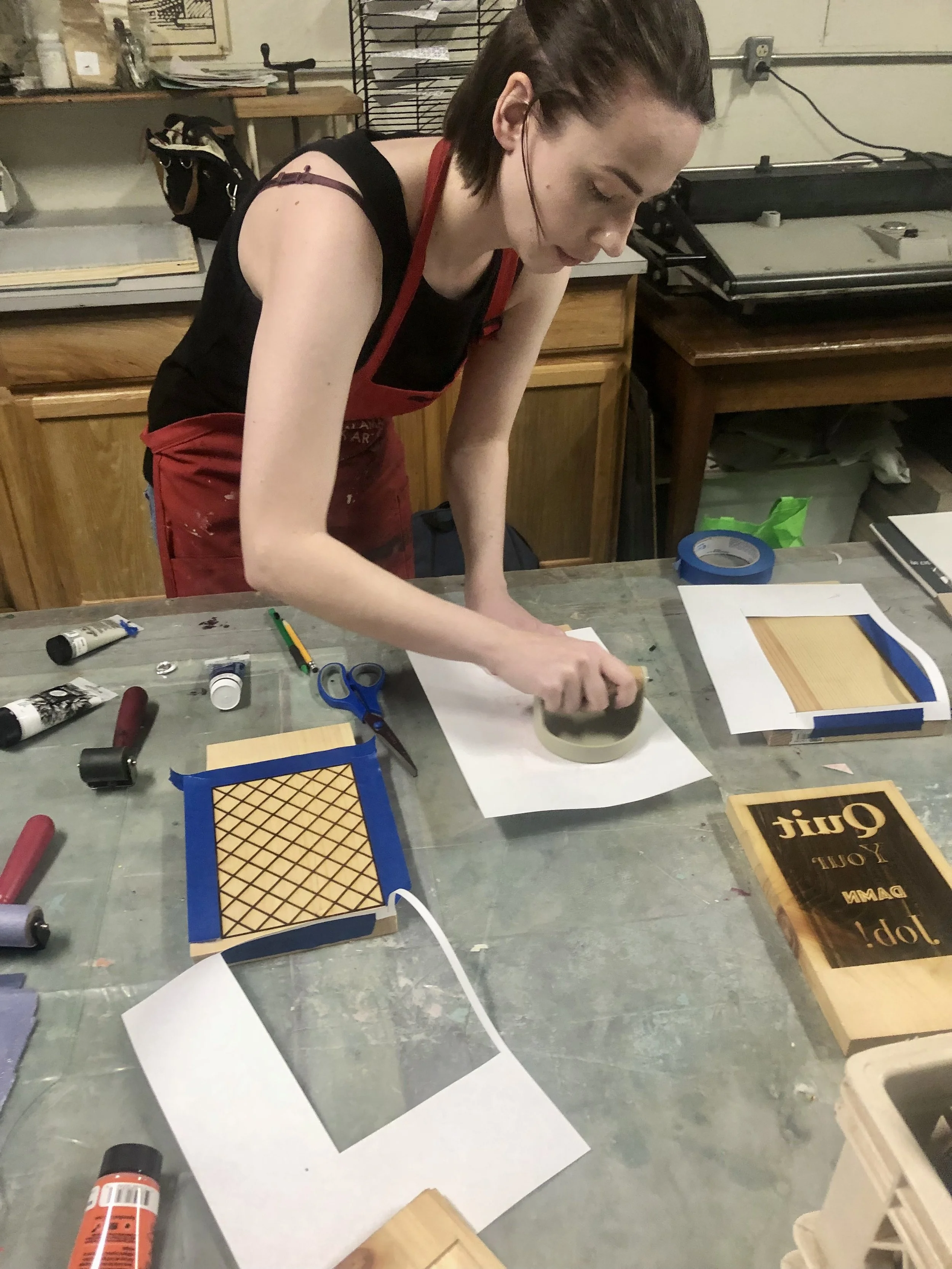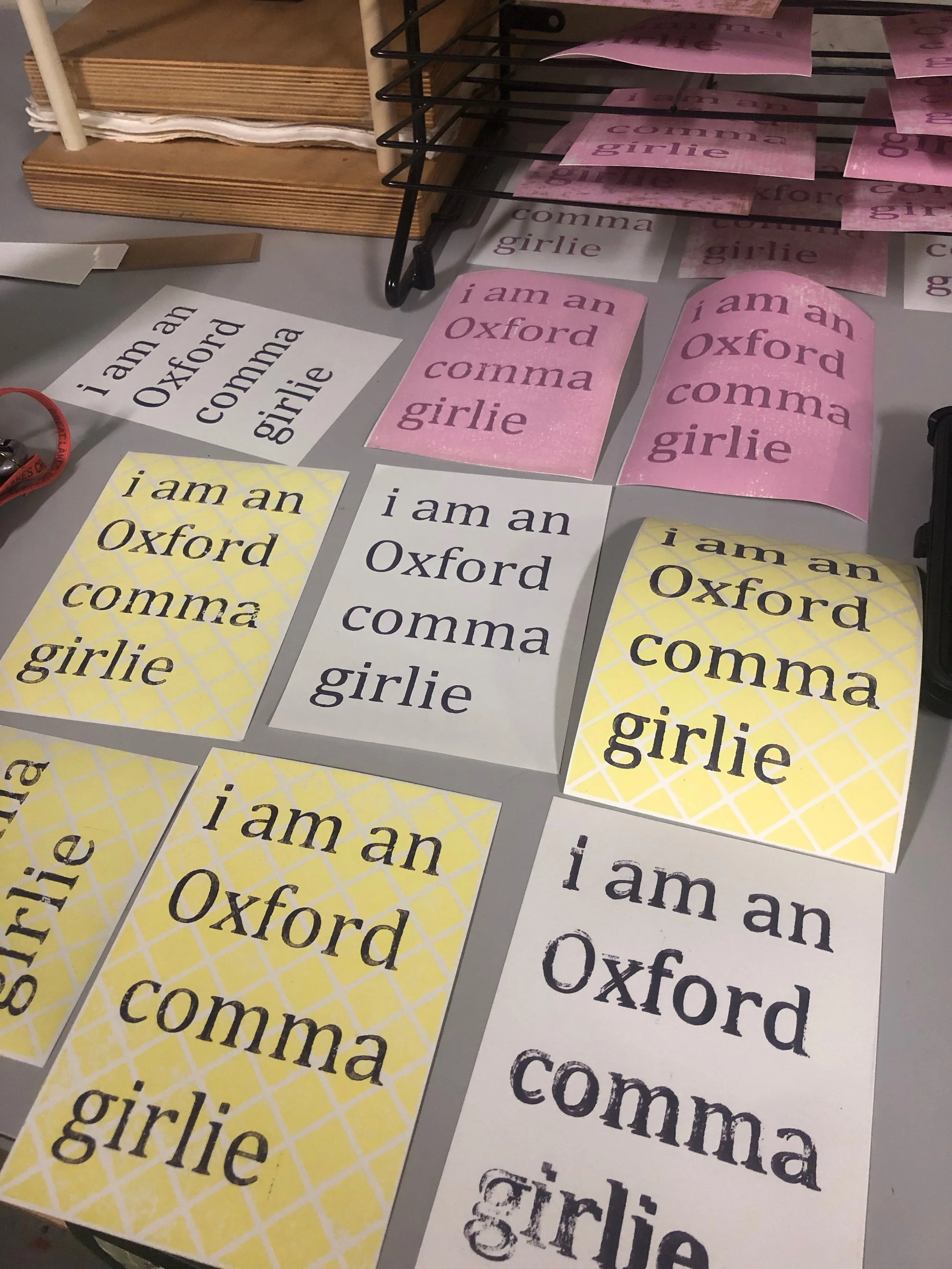Art Making In Public Spaces
Artists know all too well that making art is a calling. We can’t help it! The art that is inside us must be made. But making art outside of a university, college, or formal institution is very difficult to accomplish. Renting studio space, purchasing or coordinating equipment time, and then hauling butt to finish the work can be a challenge for working artists. Not to mention those costs add up. So what is a working artist to do if they are not in a formal setting? How can they make work affordably and accessibly in the public sphere?
With the help of a grant funded professional development trip, I set to learn about public art spaces, how they operate, and how I could incorporate my art practice into these spaces.
The Conference
Traveling to Madison, WI for the College Book Art Association or CBAA conference, I noted the theme “Embracing the Tangible: Fostering Interdisciplinary Connections in Book Art. With my background as an artist and a library employee, I interpreted this theme as fostering connections with the arts and multi-use spaces, like libraries. What kinds of possibilities are out there in these spaces and how can I develop and execute a project?
My attendance to the conference was sponsored in part by the Arts Council of Greater Kalamazoo with the use of the KADI grant.
The Library
In Southwest Michigan, there are abundant libraries and library services. A trend of the moment is offering multi-use creative spaces. They go by many names: Idea Lab, Makerspace, Creation Station, Library Labs, Tool Library, etc. The purpose of these spaces is to offer use of software and equipment a person might not otherwise be able to access. It boosts interest in learning new technologies and offers a chance to use equipment for free, a true marvel in this day and age. Some amazing spaces in my area are at the Kalamazoo Public Library and the Portage District Library.
It was here that I started my research of equipment offerings, open studio hours, appointment requirements, and cost of use and landed at the Portage District Library. Their makerspace is equipped with die cutting machines, 3D printers, laser engravers, specialty maker kits, and offers software suites for public use.
It was a little overwhelming on where to start since they had so much to offer. But what could I make with these new machines to try?
The Project
I live in the world of book arts. That means bookbinding, papermaking, and printmaking. Something I had not done in ages was doing anything related to letterpress, a form of printmaking. I love the words, messages, and flexibility of moveable type. Like an ever changing puzzle that I design, it can be assembled, printed, and put away to be used again for a new puzzle later on.
As an intern at the Kalamazoo Book Arts Center, I learned how to set type, do a print run, clean the type, and put it all back in the correct case. At that time, I was noticeably bad at it. I often got letters wrong, used the incorrect spacings, never tracked which type I was using, or put the type back in the wrong drawer. Sorry guys! But I still wanted to make something letterpress related. So I found a cheat.
I decided to use modern typographies in Adobe Illustrator, design fun phrases, and laser engrave the designs onto scrap wooden boards to make mock letterpress posters. This was entirely experimental and unclear if it would even work well. But I set to work to find out!
Hitting up the library, I booked computer time to design the posters in Illustrator. I played with difference typefaces and methods for making a textured background. And yes, I took note of the typefaces used this time!
Next, I booked time with the laser engraver. This was great because it’s one of the few pieces of equipment that doesn’t charge for material costs because you bring your own. I spent time with the Makerspace Assistant, Sean, and he walked me through step-by-step how to convert the Illustrator files to be compatible with the laser engraver software. I learned cut paths, burn strengths, and how many passes it would take to make engravings deep enough for relief printmaking to work.
This took some time. I had to familiarize myself with the software, bring all my materials to the appointment, and test out what worked and what didn’t. I also had to remember the nuance of printmaking, meaning I had to make sure the words engraved backwards so they would print forwards the correct way! Not to mention, engravings take time. This is true if done by hand or machine. Sometimes a laser engraving job could take over an hour, so I took that into consideration and would engrave two plates at once. I would read or do other things while the engraver did her thing.
I ended up with three plates of phrases and four plates of background textures. Once the plates were done, all that was left to do was ink them up, and see if a print would turn out.
The Results
I coordinated studio time at the Kalamazoo Book Arts Center and set up my inking station. Having my wooden plates, paper, ink, baren, and brayer packed in one tote bag, I was able to set up and tear down easily. All I needed access to was a sink for clean up. That meant this could have easily been done just about anywhere!
I set up my plates, decided which phrases would go with which background, and got color mixing.
How did it all turn out? Spoiler! FRICKIN FABULOUS!
With trial and error, using wet vs dry paper, and varying ink amounts and pressure, I got a good variety of prints that turned out great. I was hoping for a more graphic appearance but many prints revealed unexpected textures that I ended up loving! Some were quiet looking, some were more loud, and some were just simple words.
I am so pleased how the entire project played out from conference to library to finished print. What excites me most is this is a process that is affordable and can be easily repeated. The only thing it really cost me was my time.
Now that I know how it all works, I already have ideas for my next set of posters!
It gives me a lot of hope for the future that our public institutions are realizing the role the Arts play in community health. There is a deep desire for hands-on, tactile learning and a connection to community and community spaces. It is more important than ever that these spaces remain accessible and open for a community to thrive! I feel so lucky that I have access to places where I can learn, play, and express myself through my art.
I’d like to thank the Arts Council of Greater Kalamazoo, the Portage District Library, and the Kalamazoo Book Arts Center for all their support for this project to come to fruition. I would not have been able to do it without your help, input, and patience. (Note the impeccable use of the Oxford comma.)
